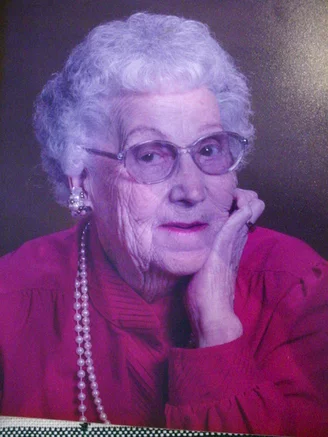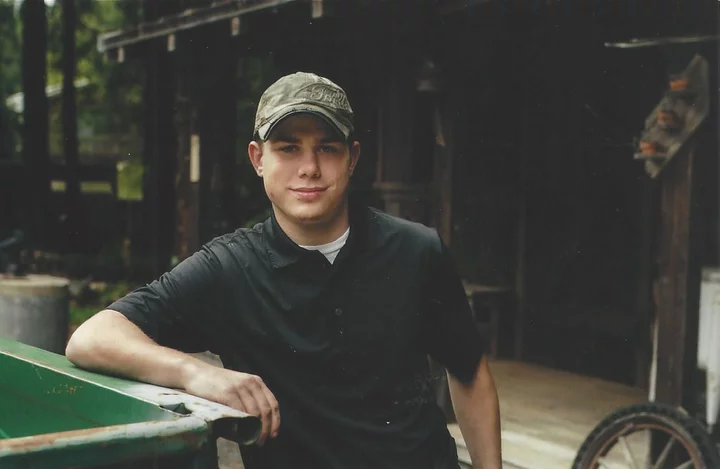OBITUARY: Dessa Marcella Hanes, 1940-2023
LoCO Staff / Saturday, Feb. 18, 2023 @ 6:56 a.m. / Obits
It is with a heavy heart that we announce the
passing of Dessa Marcella Hanes. Born Dessa Marcella Bigham in
Brownwood, Texas on August 19, 1940, she
passed away peacefully, surrounded by family in her home in Eureka
in the late hours of February 7, 2023, after a short but difficult
battle with lung cancer.
Dessa was the seventh out of 13 children. She and her siblings grew up picking cotton with their father. When she was a teenager, she moved to California, eventually settling in Crescent City, where she met the love of her life, Bennie Frank Hanes Sr. They were married in 1958, had four children, moved to Eureka, and were together for 33 years before Bennie’s death in 1991. Dessa worked at Bank of America, first as a teller then all the way up to money counter in the vault, until she retired after working there for just over 30 years.
Dessa loved camping with her kids when they were younger. She had fun getting to visit Texas when she could, especially when accompanied with her daughter Mitzi, where they made stops at the Grand Canyon and the Painted Desert. Her favorite music was country music, she had a picture of a young George Straight hanging on her wall, and she loved going to concerts with her daughter Sandy. She spent her free time working on puzzles, reading romance novels, and cooking. She enjoyed all types of crime shows, lifetime movies, and never missed an episode of Dancing with the Stars. She looked forward to speaking with her daughter Mary about the shows they were watching. These last few years, the most important thing to her was spending time with her grandchildren and great-grandchildren.
She was preceded in death by parents: Pervy Victoria Sr. and Delia Bigham; her older brother: Pervy Victoria Bigham Jr.; her sisters: Eva Hennassee, Shirley Baker, Margaret Wells, and Mary Snead; her husband: Bennie Hanes Sr.; her son: Bennie Hanes Jr.; and her grandsons: Scott Mitchell and Kristopher Mitchell.
Dessa is survived by her brothers: Tommy, Kenneth, Jess, Jerry, and Bill Bigham; her sisters: Katie Horton and Victoria Massey; her daughters: Mitzi Hanes, Mary Hanes, and Sandy Powel; her son in law of 41 years: Donny Powell; her grandchildren: Curtis Daniels, Nicole Powell, William Lipscomb, Amanda Lipscomb, Georgia Gladitz, Delia Hanes, Cameron Powell, Stetson Powell, Amanda Bingham, Wendy Hicks, Kali Powell, Dawson Morin, and Lily Smith; and 13 great-grandchildren.
###
The obituary above was submitted on behalf of Dessa Hanes’ loved ones. The Lost Coast Outpost runs obituaries of Humboldt County residents at no charge. See guidelines here. Email news@lostcoastoutpost.com.
BOOKED
Today: 3 felonies, 10 misdemeanors, 0 infractions
JUDGED
Humboldt County Superior Court Calendar: Today
CHP REPORTS
1201 Allard Ave (HM office): Hit and Run No Injuries
Sr299 / Glen Rd (RD office): Assist CT with Maintenance
ELSEWHERE
Governor’s Office: Governor, First Partner statement on the passing of Frank Gehry
KINS’s Talk Shop: Talkshop December 5th, 2025 – Miles Slattery
County of Humboldt Meetings: Headwaters Fund Board Meeting 12/9/25
RHBB: Prescribed Burning Planned Today Across Multiple Green Diamond Sites, Weather Permitting
OBITUARY: Shirley J. Thomsen, 1923-2023
LoCO Staff / Saturday, Feb. 18, 2023 @ 6:56 a.m. / Obits
She was born March 20, 1923, in Rawlins, Wyoming, the daughter of
Alma Strandberg McClurg and Ralph McClurg. Along with her mother, she
moved to Humboldt County in 1926, eventually living with her mother and
step-father on the Matthiesen dairy ranch in Carlotta (now known as the
Bess ranch). Upon graduation from Fortuna High School in 1941, she
attended Humboldt State College and was later a graduate of Eureka
Business College. Prior to her marriage to Jimmie Thomsen in 1944, one
of her jobs was waitressing at the Mowatoc Hotel (now known as the
Scotia Inn). Following their marriage, Shirley and Jimmie lived and
worked on the Thomsen dairy located on Copenhagen Road, Loleta (home of
the once proudly standing round barn), until selling out during the
December flood in 1964.
Shirley will be remembered for her well maintained flower gardens on Home Avenue, Fortuna, along with her excellent baking skills; her pies, cakes and cookies will be greatly missed. She was an avid San Francisco Giants and 49er’s fan. When the games were on she could not be interrupted and s he was like an encyclopedia on the game and its players.
Shirley and Jimmie liked to travel, making trips to Denmark, Canada and Hawaii. Together they also liked to dance to Scandinavian music, the yearly mid-summer Scandinavian Festival being one of their favorite events. Picnicking at Runeberg Park, Carlotta or traveling out to Petrolia to visit friends was a regular Sunday event during the summer months.
Shirley was a member of Fortuna United Methodist Church and several Scandinavian lodges, both Danish and Swedish.
Shirley is survived by her three sons: Duane Thomsen (Jackie), Melvin Thomsen (Sharon), and Erik Thomsen (Judi); and numerous grandchildren and great grandchildren. Shirley was preceded in death by her husband of 54 years James S. Thomsen in May 1999, her mother Alma Strandberg Matthiesen, step-father Jake Matthiesen, and father Ralph McClurg.
Private inurnment will be at Sunset Memorial Park in Eureka.
Memorial contributions may be made to Hospice of Humboldt or Fortuna United Methodist Church.
###
The obituary above was submitted on behalf of Shirley Thomsen’s loved ones. The Lost Coast Outpost runs obituaries of Humboldt County residents at no charge. See guidelines here. Email news@lostcoastoutpost.com.
HUMBOLDT TODAY with John Kennedy O’Connor | Feb. 17, 2023
LoCO Staff / Friday, Feb. 17, 2023 @ 4:56 p.m. / Humboldt Today
HUMBOLDT TODAY: A body is found near downtown Redway, Del Norte County is addressing its own housing and homelessness problems, plus the weekend’s events, weather and our daily poll asks you to tell us about your drag show attendance history. Those stories and more in today’s newscast with John Kennedy O’Connor.
FURTHER READING:
- ‘Kings, Queens and Things’: Drag Shows are Taking Off in Humboldt, Including One Up-and-Coming Show at an Unexpected Venue
- Man Wanted on Multiple Warrants Arrested on Woodley Island Following a Traffic Stop; Meth, Fentanyl Found, Sheriff’s Office Says
- Battery Point Apartments Nets $7.5 Million From the State
- Curry County Grand Jury Finds Brookings PD Officers Justified In Dec. 10 Shooting of Grants Pass Man
- County Supervisors Unanimously Declare Shelter Crisis in Del Norte, Four Endorse Pallet Home Plan to Solve Homelessness
HUMBOLDT TODAY can be viewed on LoCO’s homepage each night starting at 6 p.m. Want to LISTEN to HUMBOLDT TODAY? Subscribe to the podcast version here.
Incumbents Win Re-Election to Coast Central Credit Union Board, Along With One Newcomer
Ryan Burns / Friday, Feb. 17, 2023 @ 3:31 p.m. / Business
Coast Central Credit Union’s Eureka branch on Fourth and F streets in Eureka.
# # #
# # #
When a slate of new candidates launched a campaign for Coast Central Credit Union’s board of directors, they said they wanted to unseat a pair of incumbents and increase member involvement. They achieved one of those goals.
The credit union’s annual membership meeting was held last night, and attendees tell the Outpost that there were 60 to 70 members present, far more than have attended the meetings in recent years. One reader emailed to say, “It got reeeaaaal spicy lmao.”
So, increased member involvement? Check. (The Outpost is trying to get more information about the spiciness.)
Unfortunately for the “Members’ Voice” candidates, though, both incumbents — Eureka attorney Kelly Walsh and board Treasurer John Gladding — were re-elected to three-year terms, starting in March.
The third incumbent, Robin Bailie, opted not to pursue re-election.
Who got her seat? That would be Rees Hughes, a former administrator at Humboldt State University, author of local hiking guides and one-third of the “Members’ Voice” slate. He, too, will serve a three-year term that commences with next month’s regular board meeting.
The credit union’s 76,000-odd members submitted their votes last month, and the results were announced at last night’s meeting.
Interviewed in December Walsh said, “Experience matters,” and he argued that the relative dearth of competition for seats on the board over the last decade was a sign of member satisfaction, reflecting Coast Central’s “good board policies and very good management and staff.”
This was the first contested election for the organization’s board of directors in nine years.
Eureka Cultural Arts District Seeks Graphic Designer to Create a Logo and Style Guide
LoCO Staff / Friday, Feb. 17, 2023 @ 1:03 p.m. / Art
File photo from the 2019 Eureka Street Art Festival.
Press release from Eureka Cultural Arts District:
The Eureka Cultural Arts District is seeking a graphic designer to create a logo and supporting basic style guide for the District.
The Eureka Cultural Arts District, which runs from Blue Ox Millworks in the East to the outer reach of the Eureka Slough in the West and from Waterfront Drive in the North to Seventh Street in the South, is one of 14 State recognized Cultural Arts Districts.
Eureka’s District is intended to act as a focal point for all cultural and artistic activities within the district’s boundaries while encouraging economic development, tourism, equity and inclusion, community engagement, arts programming, support of artists, and cultural and historic preservation.
It’s a place for dynamic engagement with a diverse and multi-ethnic population of artists, culture bearers, innovators, and creatives as they come together to celebrate the many expressions of Jaroujiji (Eureka) and Wigi (Humboldt Bay), honoring the interweaving of traditions and lifeways. The District envisions an inclusive future nourished by culture, art, food, performance, and storytelling - all vital to sustaining our community.
A diverse working group has been meeting regularly to plan for culturally significant events, markers, signage, and site development throughout the district.
“Before we can move much further forward,” comments working group member Leslie Castellano, “we need a logo that can be used to market the district, along with guidelines for different contextual uses. We have been inspired by Wigi (Humboldt Bay), storytelling, and a celebration of cultures and place and are looking for a graphic emblem that clearly embodies the spirit of the district.”
Interested creatives should submit a portfolio or samples of their graphic design work (total 3-5 images) and a statement of interest. Diverse/BIPOC/underrepresented artists are encouraged to apply; preference will be given to groups and artists that are in alignment with the values of the Cultural Arts District. The deadline for submissions is March 10, 2023.
Funds of up to $1200 are available for the final design and usage guidelines, including color and size/shape variations. Future contracts or additional pay may be available for further development of branding and related graphic design.
Submissions should be sent to: http://inkpeopleinc.submittable.com
If you have questions, please email brieanne@inkpeople.org
Man Wanted on Multiple Warrants Arrested on Woodley Island Following a Traffic Stop; Meth, Fentanyl Found, Sheriff’s Office Says
LoCO Staff / Friday, Feb. 17, 2023 @ 11:13 a.m. / Crime
Press release from the Humboldt County Sheriff’s Office:
On Feb. 15, 2023, at about 11:40 p.m., Humboldt County Sheriff’s deputies on patrol in the Eureka area conducted a traffic stop for a vehicle code violation on Startare Drive.
Upon stopping the vehicle, deputies contacted two occupants. The driver, 25-year-old Christian Eric Yerkins, was found to have multiple warrants for his arrest. Additionally, deputies observed drug paraphernalia inside the vehicle in plain view. During a search of the vehicle, deputies located over 20 grams of methamphetamine, approximately 1.8 grams of suspected fentanyl and drug paraphernalia.
Yerkins was arrested and booked into the Humboldt County Correctional Facility on charges of possession of a controlled substance (HS 11377(a)) and possession of drug paraphernalia (HS 11364(a)), in addition to warrant charges of attempted auto theft (PC 664/10851(a)) and possession of a stolen vehicle/equipment (PC 496d(a)).
The passenger of the vehicle was released at the scene.
Anyone with information about this case or related criminal activity is encouraged to call the Humboldt County Sheriff’s Office at (707) 445-7251 or the Sheriff’s Office Crime Tip line at (707) 268-2539.
Christian Eric Yerkins Booking Photo | Humboldt County Correctional Facility
OBITUARY: Zakary Michael Avila, 1997-2023
LoCO Staff / Friday, Feb. 17, 2023 @ 6:56 a.m. / Obits
It is with such sadness that we announce the passing of our son, Zakary Michael Avila. Zak was born on February 25, 1997 and passed away on January 18, 2023. Son of Jerry and Leslie Avila; brother to Ryker, Scott, Kim and Jamie; father to Niklaus and Violet; stepfather to Hunter.
Zak grew up in Eureka, attending Arcata Christian School, Freshwater Elementary, Saint Bernards Academy, Eureka High School and graduating Pacific View Charter School. He loved and made friends with so many of his teachers and other staff through the years.
Zak and Ryker were only 10 months apart in age. They were inseparable when they were little — whether it was wrestling each other, playing legos, video games, trekking through the forest or watching their favorite shows together. Some of their favorite places to go were Grandpa Mike’s and Grandma Donna’s, Grandma Evelyn’s, sister Kim or Jamie’s house, or brother Scott’s house.
We have lived in our same home all of Zak’s life where so much time was spent with Ryker and his nephews Trevyn and Tyce in their younger years. They loved running through the sprinklers, riding bikes, lemonade stands, building forts, attempting to spend the night in the tree house until a raccoon ran them out of there, air soft wars and hours and hours of jumping on the trampoline.
Zak’s friendly nature has allowed us to meet many of our neighbors. Even as a toddler on our stroller ride walks always wanting to see if Loretta was home, who became a second grandma to Zak and Ryker throughout all of these years.
From the age of five and on up when we would ask him what he wanted for his birthday or Christmas the answer was always the same: guns and knives. Each one was unique and he loved them all. His favorite day of the year was “shoot day” at Aunt Laurie’s and Uncle Tom’s.
In Zak’s early teenage years he met his lifelong friend Buddy, a.k.a. Gordon. They shared so many fun times together riding quads, fishing, camping and even sinking together in their home made boat made of cardboard.
When Zak was very little he was completely impressed with anyone that was doing hard physical labor — work boots, hard hats, chainsaws, weed eater — you name it, he loved it. Zak loved heavy equipment and had such a natural ability to do amazing work. He was very proud to get his Class A truck driver’s license at 18 years old. Zak was very creative and talented — he loved making beautiful burl tables and cool wooden bowls as well as many other hand made gifts. He was very generous and thoughtful — he loved to surprise you with something that you had wanted or got you something because he just knew you would like it. We will all miss his big smile, amazing problem solving qualities and his awesome tractor skills.
Zak was so loved and will be missed by his dad and mom; Jerry and Leslie Avila; brother Ryker Avila; brother Scott Avila (Hayley); sister Kim Mullins (Daman); sister Jamie Biagi (Victor); son Niklaus; daughter Violet; stepson Hunter; nephews Trevyn, Tyce, Silas and Jag; nieces Brooklyn, Taylee and Cheyenne; grandmother Donna Wallace; and numerous aunts, uncles, cousins and friends.
It meant a lot to Zak to meet his biological family and he was very happy that he was able to connect with each of them: father, Boyd; mother; Crystal; sister, Sara; brothers Richard, Adam and Kaden.
We love you our Zakky boy — you will never be forgotten.
There will be a Celebration of Life for Zak on Saturday March 4, 2 p.m. at the Moose Lodge, 4329 Campton Road, Eureka. Please bring photos or stories if you would like to share.
###
The obituary above was submitted on behalf of Zak Avila’s loved ones. The Lost Coast Outpost runs obituaries of Humboldt County residents at no charge. See guidelines here. Email news@lostcoastoutpost.com.






